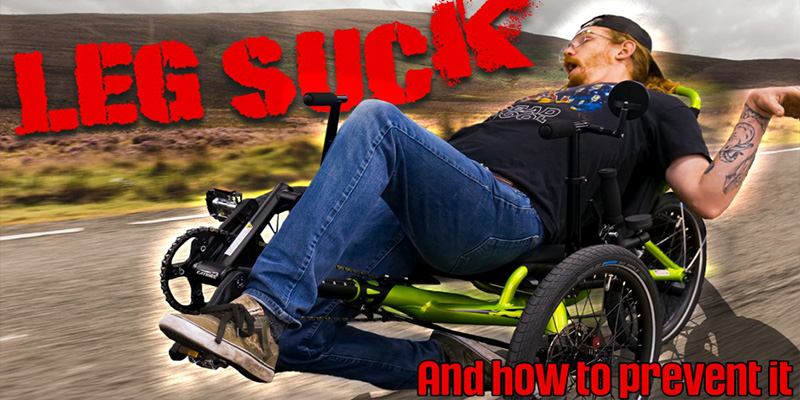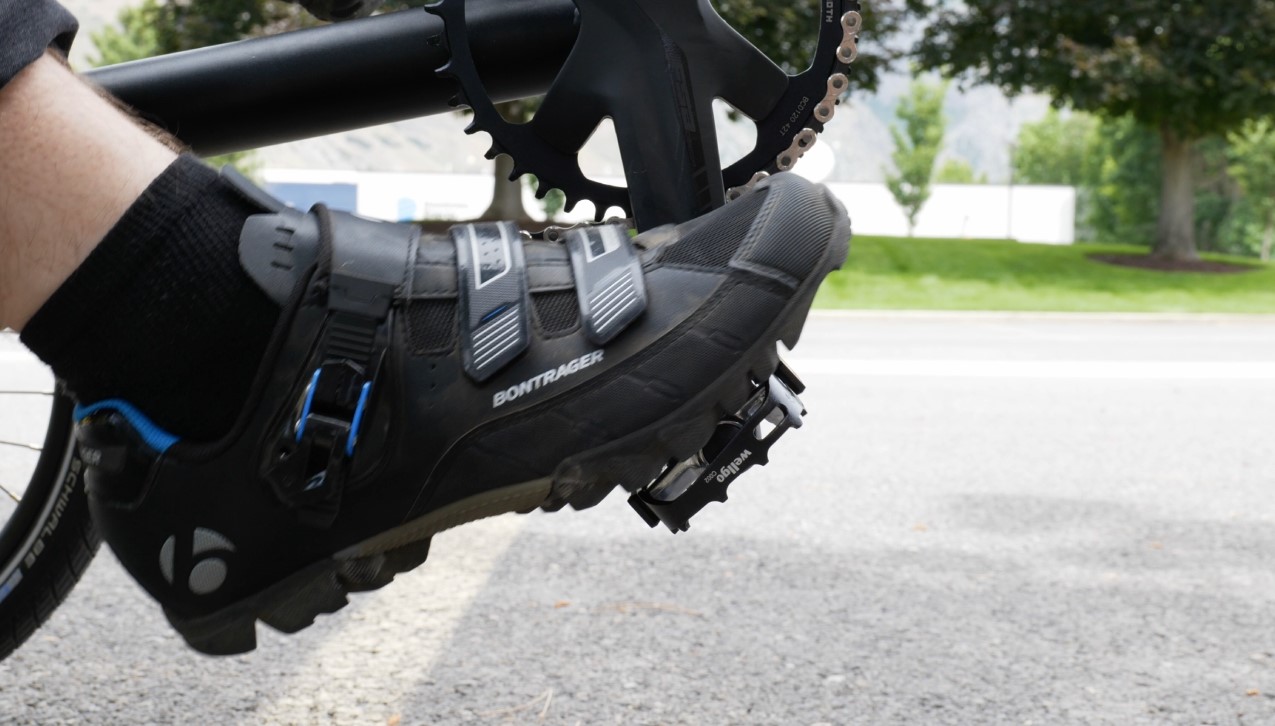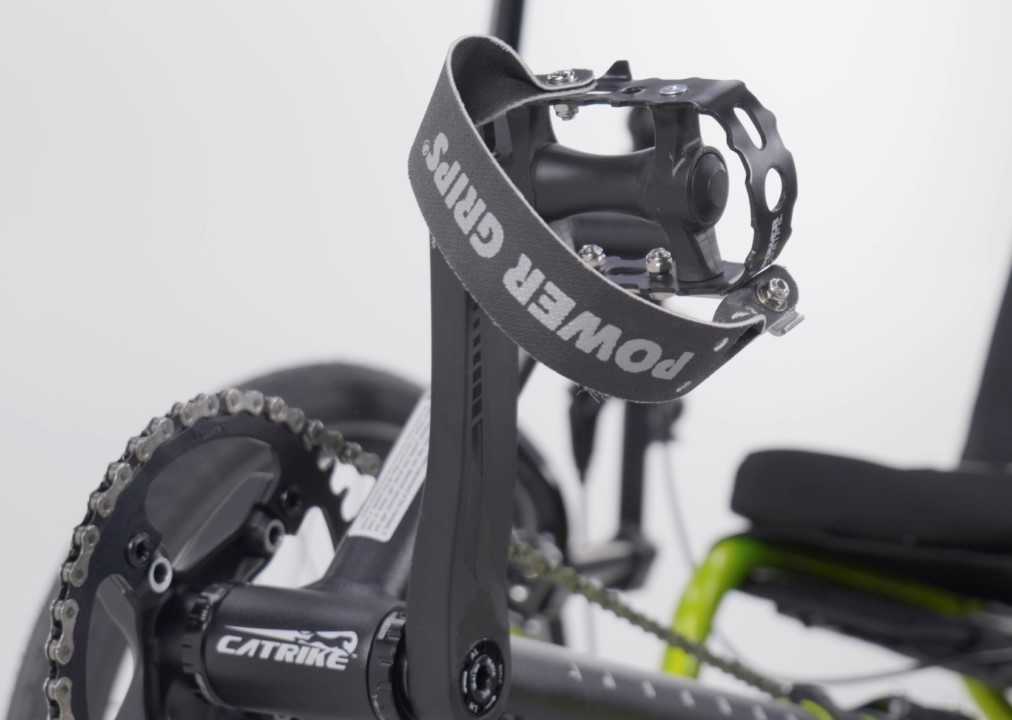

Avoid Leg Suck: Essential Tips for Trike Safety
Davy and Harold - Published on 12/04/2023
If you're buying a trike you likely have heard about the infamous leg suck that haunts the trike world. This is a semi common issue when riding a trike and is definitely worth your attention. In this article we will be covering everything you need to know about Leg Suck and how to keep yourself safe from this injury while on your rides.
Now you might be wondering what Leg Suck even is. On a tadpole trike the position in which you sit puts your feet and legs in front of the wheels and body of the trike. Which is of course a bit different than your standard bicycle.
Because of how trikes are designed there’s a possibility of your legs being caught beneath the trike as you ride, which is what we call leg suck.
If your feet fall off the pedals and head down towards the moving pavement below you there is no place for your legs to go but underneath the cruciform of the trike leaving you unable to pull your leg back up until stopped. If you get caught in this situation there is a possibility of potentially serious injuries, from broken bones or lasting mobility issues.
Now, I know that sounds scary and even though a trike can come with these risks. It doesn't mean that there aren't ways to prevent these injuries and keep yourself safe, just like wearing a helmet.
The best way to protect yourself from Leg Suck is by securing your feet to the pedals. Stock trikes come with your standard bike pedal, a cleat to increase traction on the pedal, and many also have an attachment for clipless pedals like on the Wellgo pedals that come stock on Catrikes.

Clipless Pedals and Riding Shoes
This leads us into our first option: clipless pedals and riding shoes. The most popular option for trike riding is clipless riding shoes. Allowing you to attach your special shoes to the pedals of your trike, this gives you the power of pushing and pulling your pedals, while also locking your feet in and completely preventing any risk of leg suck.
We have two options for clipless pedals here. The standard wellgo pedals that have one side for normal pedaling and the other side for clipless riding, and also the clipless only pedals. A riding shoe can come in many shapes and sizes but a standard one will look something like the photo below.
Attaching your shoe to the pedals is just a couple of steps. Once you're on your trike all you need to do is put the toe end of the cleat to the pedal and press down with the ball of your foot to lock it into place

If you want to remove your shoe from the pedal, just twist your foot to the outside and it will pop right off. Easy Peasy. Another upside to using riding shoes is that it provides more pedal power. It allows you to use the Spinning Pedal technique. Spinning is when you push and pull your pedals. This allows you to have more efficient pedaling while also reducing the force on your feet and knees.
All of our clipless pedal options use the Shimano SPD connection type and most shoes come with exchangeable clip options. A riding shoe is great for performance, and ease of access to a safer riding experience. There's no straps needed, just a quick lock in with a click of your foot and you're ready to ride.
The downsides of this method is that riding shoes are stiff and uncomfortable for walking. If you are a dedicated rider who wants increased performance and comfort this is definitely the option for you. Other options include pedal straps. These allow for any type of footwear when riding, while still keeping your feet in place. The Next pedals we will talk about are strap pedals.
Strap Pedals
There are a couple different options of these types of pedals that can keep you locked in. The first option being the Power Grip Sport Pedal. This is a regular pedal with a diagonal strap that you just slip your foot in. This simple construction is surprisingly effective.
By sliding your foot in at an angle and straightening it out to rest on the pedal normally securely locks your foot on the pedal. A simple solution that gets rid of the hassle of having dedicated riding shoes. An option that also provides a lot of heel support for weaker ankles is our UTCustom heel support pedals.
This type of pedal provides a large platform for your foot, while also providing a padded rest for your heel to really lock you in place. Depending on what model you get there are different straps, but it's generally 2 straps one for the flat of your foot and the other near your ankle to reduce movement of your foot away from the pedal.
These are also a high security option much like the clipless shoes that make sure your feet aren't going anywhere away from the pedals. While also being a great accessibility option if you have weaker ankles or need more support for your heels.
As many trike professionals have said before: some form of pedal strap or riding shoes should be regarded as just as important as a riding helmet. Much like a seatbelt it helps protect you and keep you away from unfortunate accidents. Pedals can only do so much though. You always need to have good practice when riding a trike as well.
The biggest thing you can do is to not put your feet down while the trike is still moving and to lock your brakes once you park. Leg Suck isn't just a high speed injury. Like one of our readers said in his account of his injury. He was just parking his trike and put his foot down a little too soon and that's all it took to get caught.
The momentum of a trike can be a lot more than anticipated so make sure to keep your feet on those pedals until you have come to a complete stop. With that you have all you need to know to keep yourself safe from the infamous Leg Suck.
We hope this article was informative and helps everyone be a bit more conscious of the potential dangers that can come with riding a tadpole trike.
If you liked this article let us know in the comments and If you've had an encounter with Leg Suck feel free to leave a comment and tell us your story and how you have prevented Leg Suck in the future. Now until next time remember to relax, spin fast and ride trikes









